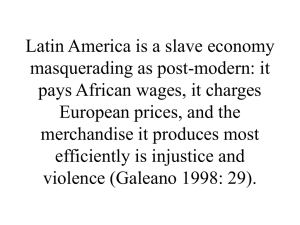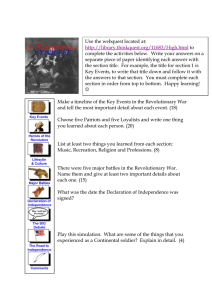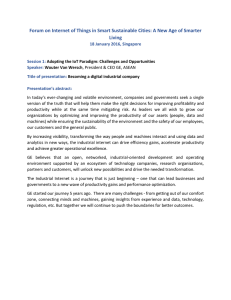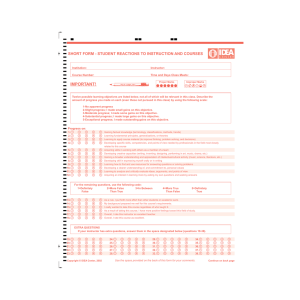• Latin America is a slave economy
advertisement
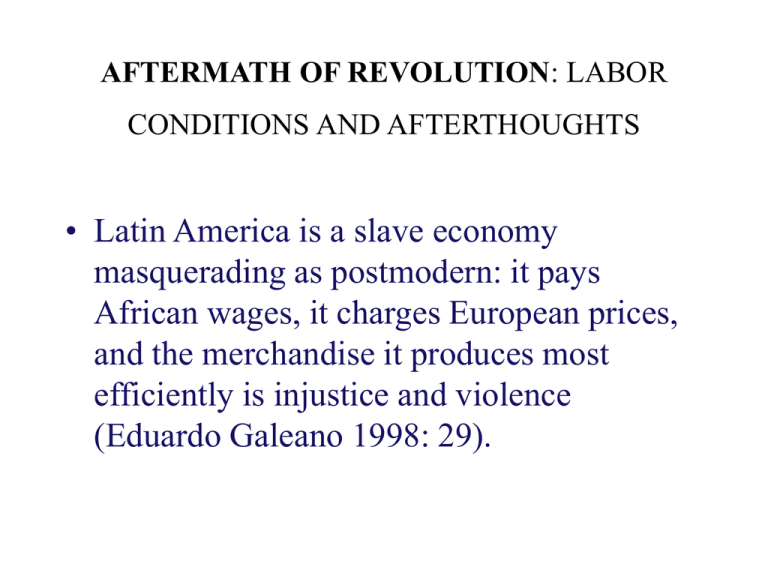
AFTERMATH OF REVOLUTION: LABOR CONDITIONS AND AFTERTHOUGHTS • Latin America is a slave economy masquerading as postmodern: it pays African wages, it charges European prices, and the merchandise it produces most efficiently is injustice and violence (Eduardo Galeano 1998: 29). Today’s assessment Aftermath of revolution: What happened to the revolutionary social, political and economic gains brought about by the Nicaraguan revolution in the 1980’s? —Why and how were these policies and issues rolled back by the new conservative and liberal governments ? • What do these social and political changes mean to the great majority of Nicaraguans? • What does the future hold for Nicaraguans? http://marcus.whitman.edu/~bl oomqcm/ Two major events that contributed to the dismantling of revolutionary gains • Electoral defeat: local level due to a number of factors • Advancement of neo-liberal policies --International policies for development --pressure from international lending organizations: IBD, IMF Creating the conditions for major changes • Elimination of revolutionary gains as obstacles for industrial development • Become a priority of the post-Sandinista structures of power • Economic and political backing from the USA Revolutionary gains • Agrarian reform: --land distribution --accessibility to credit --education Worker’s rights • Bargaining power strengthen • Labor laws • More workers organized Women’s rights • • • • Legal framework Practical terms: maternity leave Education Creation of organizations Establishment of democratic institutions • Creation of CSE • Creation of national assembly • First elections: 1984 Healthcare • • • • Universal medicare Health brigades, Health education Rural access Healthcare • • • • Universal medicare Health brigades, Health education Rural access Education • • • • Public education Literacy campaign Continuing education 6% for universities National identity • • • • Sense of independence Sense of possibilities Control of destiny Flexibility in diplomatic relations Impact of reversal of Sandinista’s gains • Government control lifted: • Abundance of food but no one can afford it • From collective solidarity to ruthless individualism Reasons behind structural adjustments • . USA interest in eliminate government obstacles to trade • 2. -Promote reforms to political and military institutions to their liking • 3. Encourage Central American economic and political integration under North American Dominance Economic consequences • • • • • Agrarian reform dismantled Education; major changes Health care: privatize Women’s rights: under threat National identity: becomes under the influence of USA policies • Labor issues: situation as bad as in Somoza’s time PPP • • • • • Plan Puebla Panama 64 million people Eight countries Infrastructure, development and jobs Maquila assembly factories

